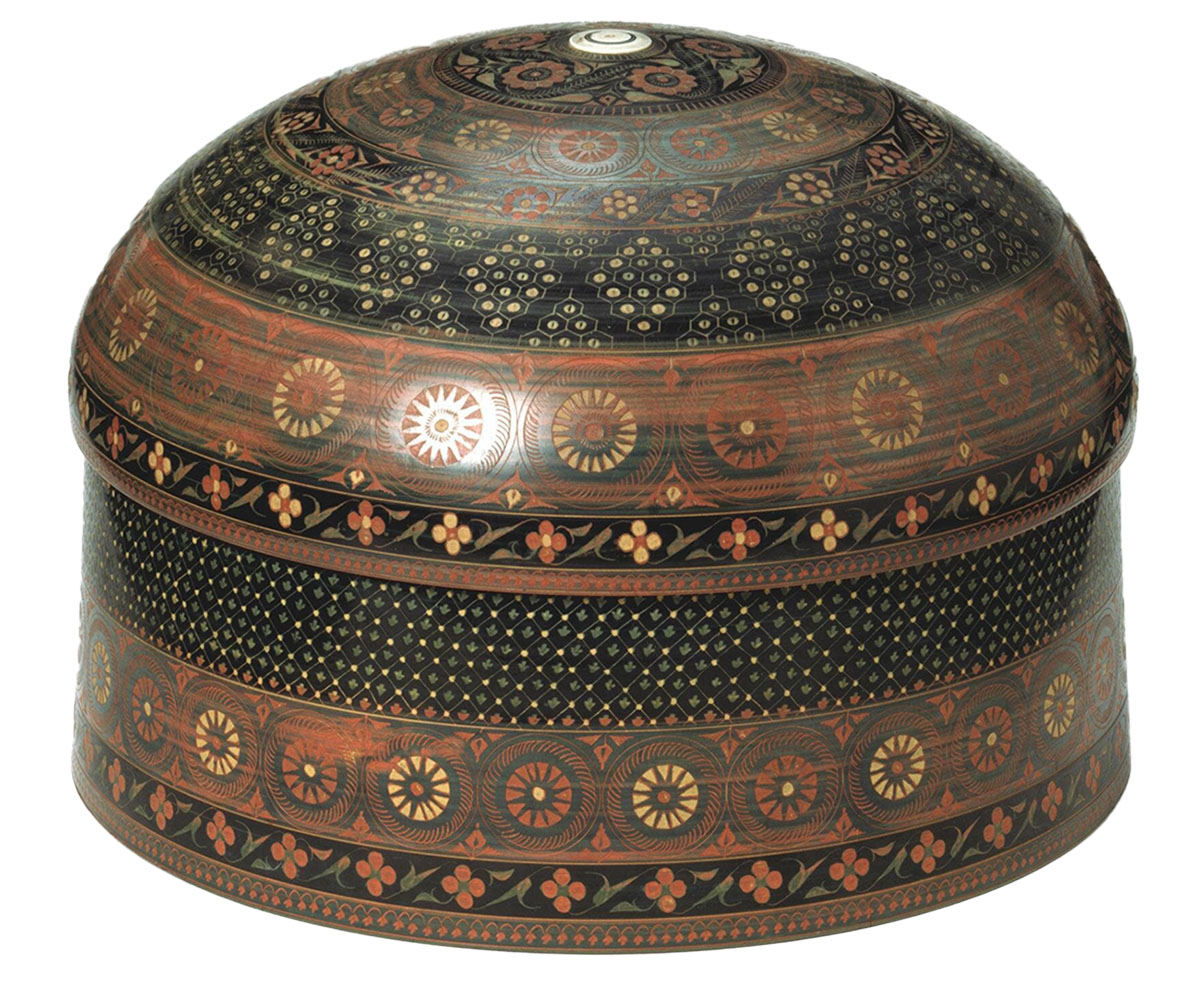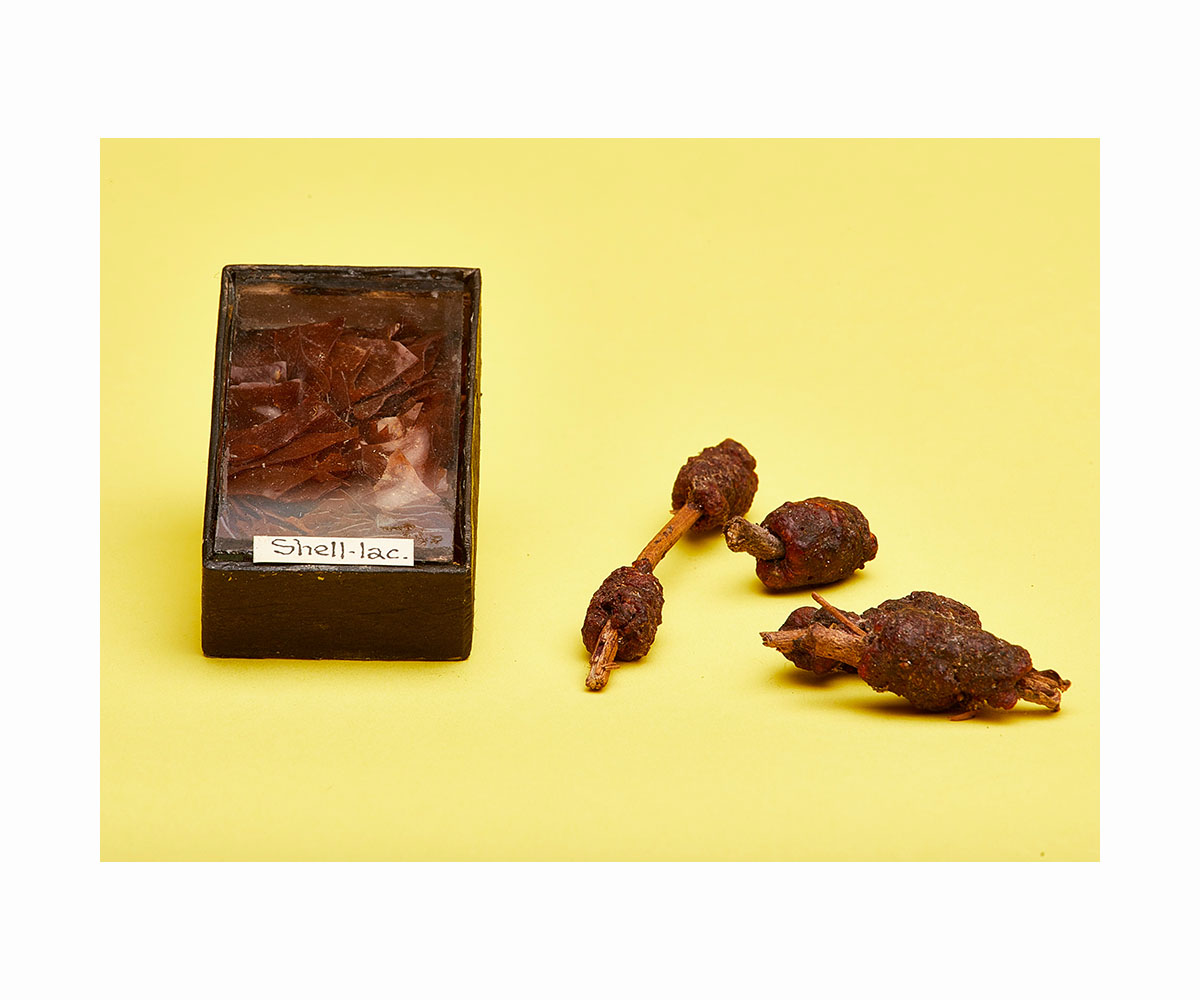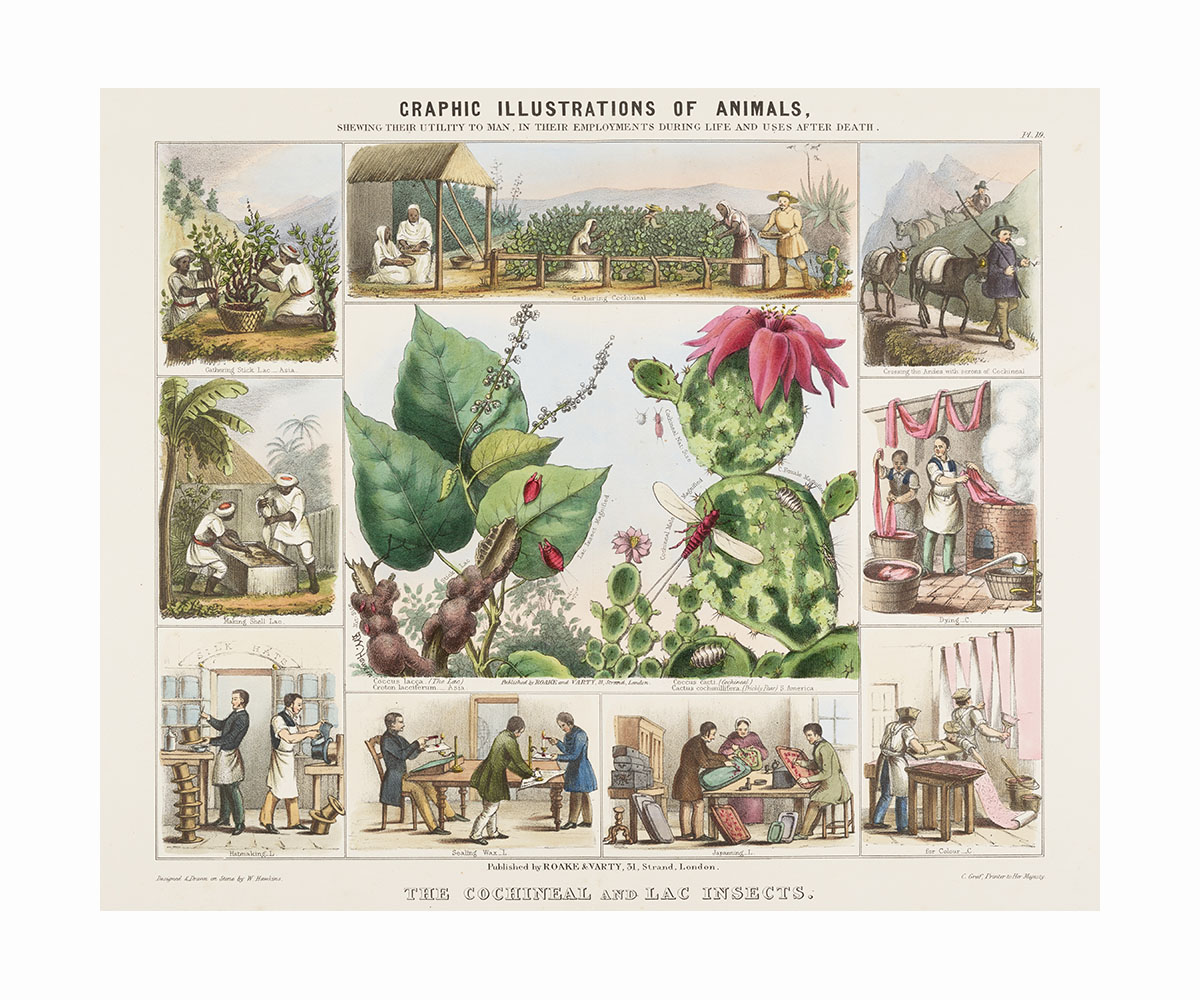ARTICLE
Lac Ware
Made from a resinous substance extracted from the lacca insect, lac ware generally refers to objects made entirely or partially from lac. The word “lac” derives from the Sanskrit laksha, meaning 100,000, referring to the large number of insects typically needed for making the resin, the red and purple lac dye, and other byproducts. Lac was known in the subcontinent from at least the first millennium BCE. It is mentioned in three texts from the period: the Atharvaveda, the Astadhyayi of Panini, and the Mahabharata, where the Pandavas are almost killed in a flammable building made of lac and ghee. Most common across the states of Rajasthan, Punjab, Gujarat and Odisha amongst others, lac is used to produce a variety of objects from jewellery to furniture. Mediaeval Indian lac work was heavily influenced by Persian lac ware brought through Punjab, and this finer form of the craft was mentioned in the Ain-i-Akbari of Abu’l Fazl in 1590. Lac art was introduced to Rajasthan in the eighteenth century and was patronised by Maharaja Ram Singh of Jaipur.
The lac insect is a crimson-red species referred to scientifically as kerria lacca or tachardia lacca, found in the forests of India and Thailand. The process begins with cultivating these insects and refining the lac extracted from them. This lac is then stored and made available in the form of flattened cylindrical coins. The quality of lac is determined by its colour — light golden, brown and dark black — wherein the former is the best quality and most expensive as well. Lac in this form is then melted with limestone to prepare the base or dough for any object; limestone is used to provide additional strength. The lac is melted in a vessel and when it is in a semi-molten state, the mixture is stirred and attached to the end of a wooden stick. The semi-molten lac is then flattened and shaped into the desired shape using a flat wooden tool locally known as hatta and a metal plate known as a silla. In the case of a bangle, the most popular craft commodity made from lac, the semi-molten lac is rolled onto a metal bangle ring or directly rolled into its desired diameter and thickness. In case colour is to be applied to the object, coloured lac is heated and melted and then it is evenly rubbed onto the object. The process is finished by cooling, drying and polishing the surface. Lac may also be poured into moulds of different shapes to get the desired result.
Odisha is one of the popular centres for the craft and is particularly known for lac siredi, a special comb made from lac. Additionally, the state is also known for jungle lac craft, wherein gift boxes made of bamboo are covered with papier mache and lacquered with colourful motifs. The states of Gujarat and Rajasthan are known primarily for their lac bangles, which in some cases are further decorated with precious and semi-precious stones. Jewellery made from lac is also popular in the state of West Bengal. Andhra Pradesh is known for its lac etikoppaka toys. Furniture that is layered with lac, is popular in parts of Punjab, particularly in the districts of Hoshiarpur and Jalandhar. In Kashmir, this craft is used to produce lacquered boxes, trays, tobacco jars, ashtrays and other items of decor. Other forms of ornamental lacquering include abri or cloud work, atishi or fire work, nakshi or pattern work and tin foil decoration.
Bibliography
Our website is currently undergoing maintenance and re-design, due to which we have had to take down some of our bibliographies. While these will be re-published shortly, you can request references for specific articles by writing to hellomapacademy@map-india.org.










